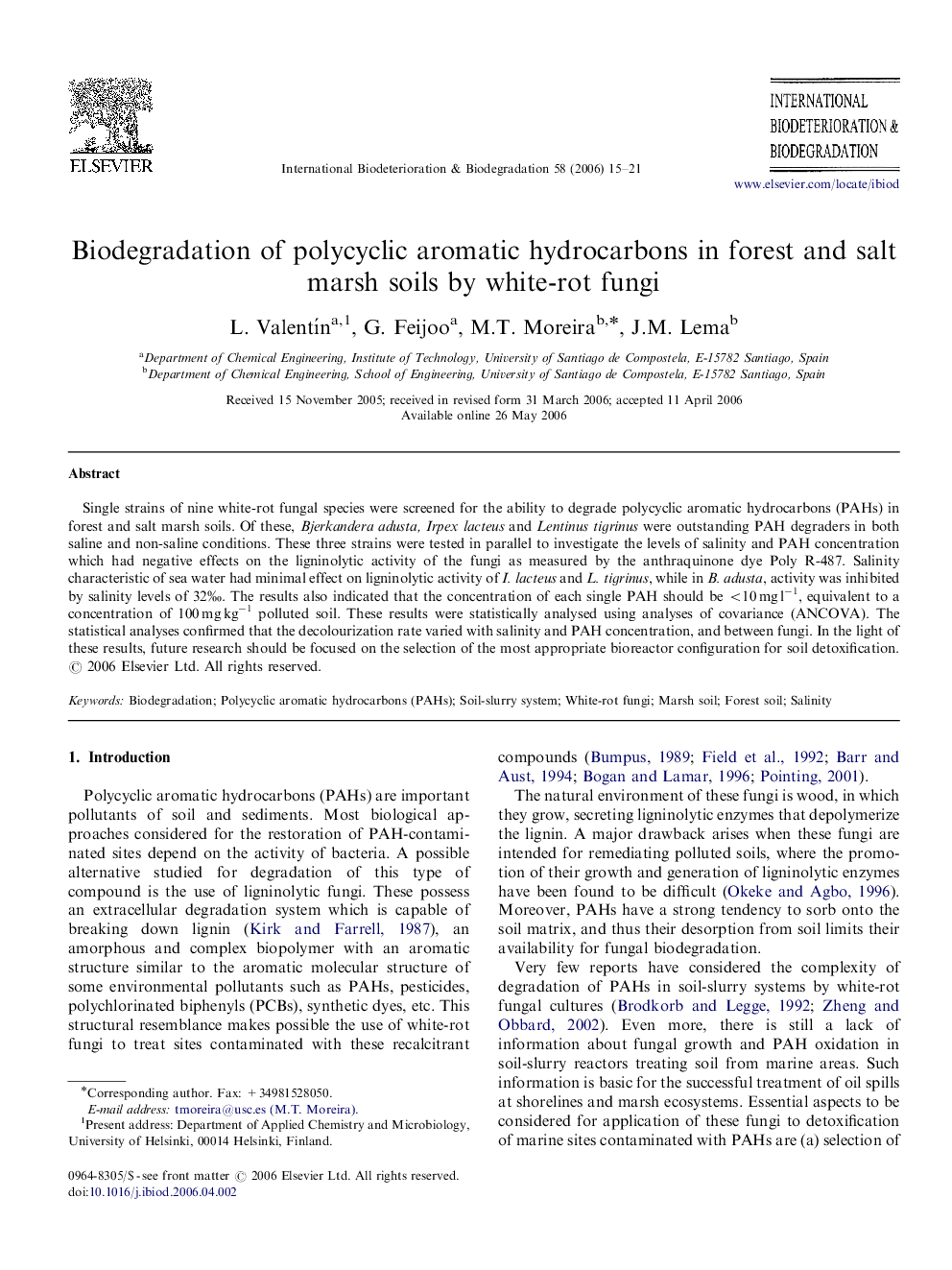| Article ID | Journal | Published Year | Pages | File Type |
|---|---|---|---|---|
| 4366076 | International Biodeterioration & Biodegradation | 2006 | 7 Pages |
Single strains of nine white-rot fungal species were screened for the ability to degrade polycyclic aromatic hydrocarbons (PAHs) in forest and salt marsh soils. Of these, Bjerkandera adusta, Irpex lacteus and Lentinus tigrinus were outstanding PAH degraders in both saline and non-saline conditions. These three strains were tested in parallel to investigate the levels of salinity and PAH concentration which had negative effects on the ligninolytic activity of the fungi as measured by the anthraquinone dye Poly R-487. Salinity characteristic of sea water had minimal effect on ligninolytic activity of I. lacteus and L. tigrinus, while in B. adusta, activity was inhibited by salinity levels of 32‰. The results also indicated that the concentration of each single PAH should be <10 mg l−1, equivalent to a concentration of 100 mg kg−1 polluted soil. These results were statistically analysed using analyses of covariance (ANCOVA). The statistical analyses confirmed that the decolourization rate varied with salinity and PAH concentration, and between fungi. In the light of these results, future research should be focused on the selection of the most appropriate bioreactor configuration for soil detoxification.
